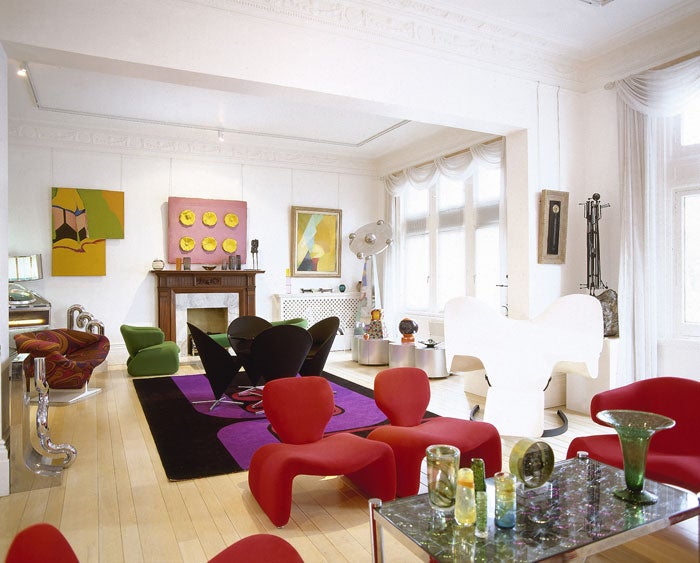
Your support helps us to tell the story
From reproductive rights to climate change to Big Tech, The Independent is on the ground when the story is developing. Whether it's investigating the financials of Elon Musk's pro-Trump PAC or producing our latest documentary, 'The A Word', which shines a light on the American women fighting for reproductive rights, we know how important it is to parse out the facts from the messaging.
At such a critical moment in US history, we need reporters on the ground. Your donation allows us to keep sending journalists to speak to both sides of the story.
The Independent is trusted by Americans across the entire political spectrum. And unlike many other quality news outlets, we choose not to lock Americans out of our reporting and analysis with paywalls. We believe quality journalism should be available to everyone, paid for by those who can afford it.
Your support makes all the difference.People are thinking about pop interiors again. Michael Bracewell's brilliant new analysis of the social and artistic roots of Roxy Music, Re-make, Re-model, isn't actually about fixing up houses but describes the Fifties and Sixties roots of English pop-ism in London and New York and the art schools.
It was all very clever stuff: a way of looking at modern mass culture – films, TV, pop music and advertising – to make art and shape artists. The key American artists you immediately associate with early pop – especially Warhol – command huge auction prices now. Some of their Brit contemporaries are being re-examined and are edging up now.
These clever people's fascination with brilliant dumb stuff shows up in characteristic interiors too, put together by Ladbroke Grove-y Brits who loved everything from the look of early-Sixties American monster cars to the cut of James Brown's jib and wanted to show it on their walls and floors. These interiors are usually owned by people who had access to the real thing – often art-school graduates who went to work in the London music, fashion, advertising and new art industries back when that first Roxy Music song came out.
Much of this stuff, the art, the furniture, the visual jokes, the trophy objects – jukeboxes, cod spaceships – became unfashionable in the country-house-hotel interiors craze of the Eighties and the Bleak House New Modernist orthodoxies of the Nineties. The bright colours and naïve-seeming enthusiasm for mass-cult looked a bit naff to people who wanted their houses to look like hip hotels or luxury-brand flagship shops and their art to be the kind of thing collected by hedge-funders. But now the world is going to hell in a handcart, a bit of bright fun that comes from a recognisable Brit take on life, rather than a hyper-hygienic American one, looks inviting.
And pop looks like that kind of fun again. You couldn't really describe this room as cheap fun – it's a fine big rectangle with good High Victorian plasterwork. It's got a lot of valuable things in it. And it's carefully and rather formally laid out (just imagine the furniture and pictures as classical stuff, the juke-box as a statue, the rug as an Aubusson).
This is a collector's room, so the walls are white (not because the owner wants a germ-free look). Everything else is a notably jarring colour: the purple of the Pierre Cardin 1970 rug; the red, green and black of the chairs; the yellows and burnt oranges of the pictures. Nothing's exactly co-ordinated here.
So it isn't DIY and a bit of crafty shopping on Portobello Road. It's clever, expensive and insider-ish, but it's still a reminder of the way we were and the way young bloods might want to go again in the dark days ahead.
Join our commenting forum
Join thought-provoking conversations, follow other Independent readers and see their replies
Comments